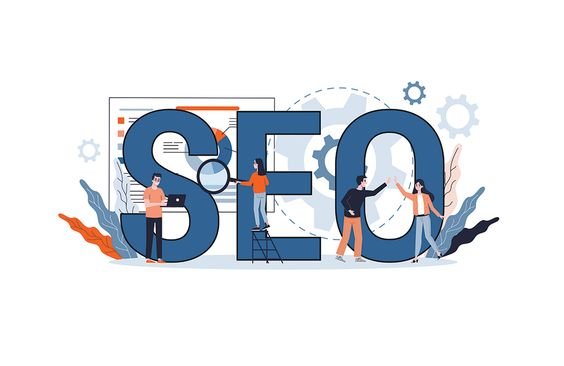Search engine optimization (SEO) is the bread and butter of digital marketing. But here’s the thing—it’s constantly evolving. What worked a year ago might not cut it today. In 2024, the spotlight is on On-Page SEO, the cornerstone of any successful SEO strategy. Whether you’re a seasoned pro or just dipping your toes into the SEO waters, this guide is your go-to resource for mastering On-Page SEO.
So, what exactly is On-Page SEO? Simply put, it’s the practice of optimizing individual web pages to rank higher and earn more relevant traffic in search engines. This guide will break down the essentials, covering everything from keyword optimization to the nitty-gritty of meta tags. Ready to dive in?
Why On-Page SEO Matters in 2024
On-Page SEO is crucial because it helps search engines understand your content and website structure. It’s like giving Google a roadmap to your site, ensuring that it knows where to go and what to display in search results. With the increasing sophistication of search engine algorithms, the need for high-quality, well-optimized content has never been more important.
1. Keyword Optimization: The Foundation of On-Page SEO
Choosing the Right Keywords
The first step in any On-Page SEO strategy is keyword research. But here’s the catch—2024 demands a more refined approach. Gone are the days when stuffing your content with keywords worked. Today, it’s all about finding the right balance.
Long-Tail Keywords: These are phrases that are more specific and usually longer than your standard keyword. They often have lower search volume but higher conversion rates. For example, instead of just “SEO,” you might target “On-Page SEO best practices for 2024.”
LSI Keywords: Latent Semantic Indexing (LSI) keywords are terms that are semantically related to your main keyword. For instance, if your primary keyword is “On-Page SEO,” LSI keywords could include “meta tags,” “content optimization,” or “SEO strategy.”
Keyword Placement
Once you’ve got your keywords, the next step is strategically placing them. Keywords should appear in:
- Title Tags: Ensure your primary keyword is in the title, preferably at the beginning.
- Meta Descriptions: Include the keyword naturally within the meta description.
- Headings (H1, H2, etc.): Use your primary keyword in at least one of the headings.
- URL: Your URL should be clean and contain the main keyword.
- First 100 Words: Integrate the keyword within the first 100 words of your content.
Remember, keyword stuffing is a big no-no. Aim for a natural flow and avoid overloading your content with keywords.
2. Crafting Compelling Meta Tags
Title Tags
Title tags are one of the most important elements of On-Page SEO. They tell search engines what your page is about. Keep your title under 60 characters to ensure it displays properly in search results.
Best Practice: Start with your primary keyword and make it compelling enough to entice users to click.
Meta Descriptions
A well-crafted meta description not only helps with SEO but also improves click-through rates. It should be a concise summary of what your page offers.
Best Practice: Keep it under 160 characters and include your primary keyword.
3. Content is Still King: Make It Count
High-quality, relevant content is the heart of On-Page SEO. In 2024, the emphasis is on creating content that provides value to the user. Google’s algorithms are getting smarter at recognizing quality, so fluff content won’t cut it.
Content Length
Long-form content tends to perform better in search rankings. Aim for at least 1,500 words, but don’t add filler just to hit a word count. Quality trumps quantity.
Readability
Your content should be easy to read and understand. Use short sentences, bullet points, and subheadings to break up text. Tools like Hemingway App can help you gauge the readability of your content.
Best Practice: Write for an 8th-grade reading level to reach a broader audience.
Multimedia
Incorporating images, videos, and infographics can boost user engagement and SEO. Visual elements make your content more digestible and can also help in ranking for image searches.
4. Optimizing for Mobile and Page Speed
With mobile traffic accounting for more than half of global web traffic, optimizing your site for mobile is non-negotiable. Google’s mobile-first indexing means that your site’s mobile version is what gets indexed first.
Mobile-Friendly Design
Ensure your website is responsive, meaning it adjusts seamlessly across different screen sizes. Tools like Google’s Mobile-Friendly Test can help you determine if your site meets the criteria.
Page Speed
Page speed is a critical ranking factor. A slow site can hurt your rankings and user experience. Use tools like Google PageSpeed Insights to assess and improve your site’s speed.
Best Practice: Aim for a load time of under 3 seconds on both mobile and desktop.
5. Internal Linking: Building a Strong Website Structure
Internal links are links that point from one page on your website to another. They help search engines understand the structure of your site and the relationship between different pages.
Best Practices for Internal Linking
Link to High-Value Content: Direct users to your best-performing pages to boost their rankings.
Use Descriptive Anchor Text: The clickable text should give an idea of what the linked page is about.
Don’t Overdo It: A few well-placed internal links are more effective than overloading your content with them.
6. User Experience (UX) and SEO
User experience is becoming increasingly intertwined with SEO. A positive UX can lead to longer dwell times, lower bounce rates, and ultimately better rankings.
Core Web Vitals
Core Web Vitals are a set of metrics introduced by Google to measure user experience on a web page. They include:
- Largest Contentful Paint (LCP): Measures loading performance.
- First Input Delay (FID): Assesses interactivity.
- Cumulative Layout Shift (CLS): Evaluates visual stability.
- Best Practice: Aim for a score that meets or exceeds Google’s recommended thresholds for each of these metrics.
7. Schema Markup: Enhancing Your SERP Presence
Schema markup is a type of microdata that helps search engines better understand your content. It can improve your site’s visibility in SERPs by enabling rich snippets, which can increase click-through rates.
Common Types of Schema Markup
- Articles: Helps with news and blog content.
- Products: Useful for e-commerce sites.
- Reviews: Displays star ratings in SERPs.
8. Analyzing and Updating Your On-Page SEO Strategy
SEO isn’t a one-and-done deal. Regularly reviewing and updating your On-Page SEO strategy is crucial to staying ahead of the competition.
Use Analytics Tools
- Google Analytics: Tracks your website’s performance and user behavior.
- Google Search Console: Monitors your site’s search traffic and performance.
Regular Content Audits
Perform content audits to identify underperforming pages. Update old content with new information and keywords to keep it relevant.
Wrapping Up
On-Page SEO is an ongoing process that requires constant attention and refinement. By following these best practices, you’ll be well on your way to improving your site’s rankings and driving more organic traffic in 2024.
Remember, SEO is as much about providing value to your audience as it is about pleasing search engines. Keep your content relevant, your keywords strategic, and your user experience top-notch, and you’ll see results.

